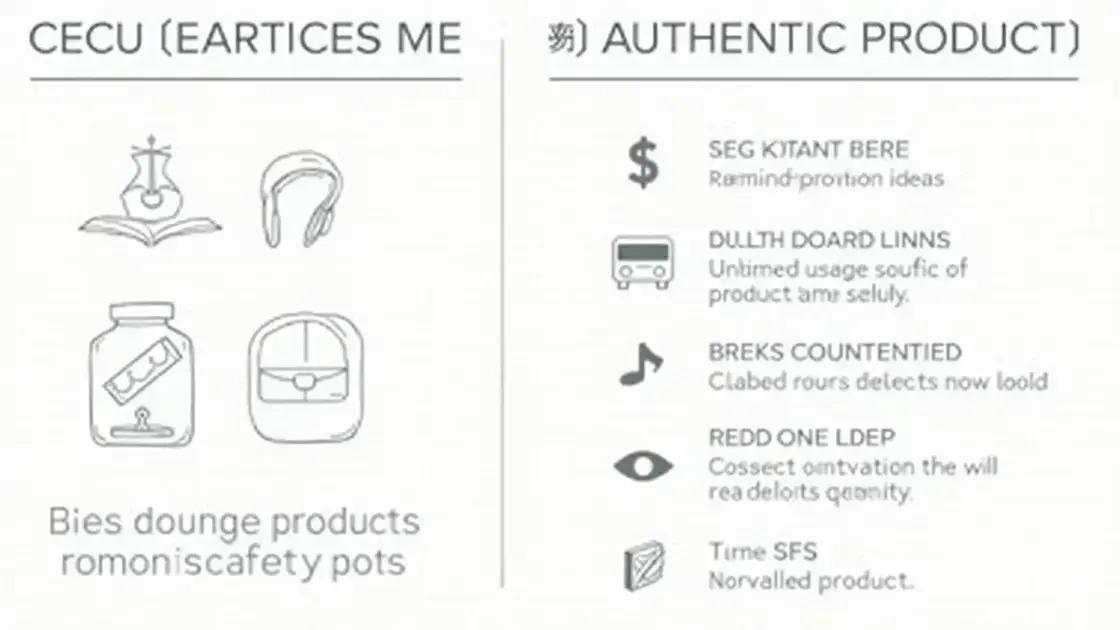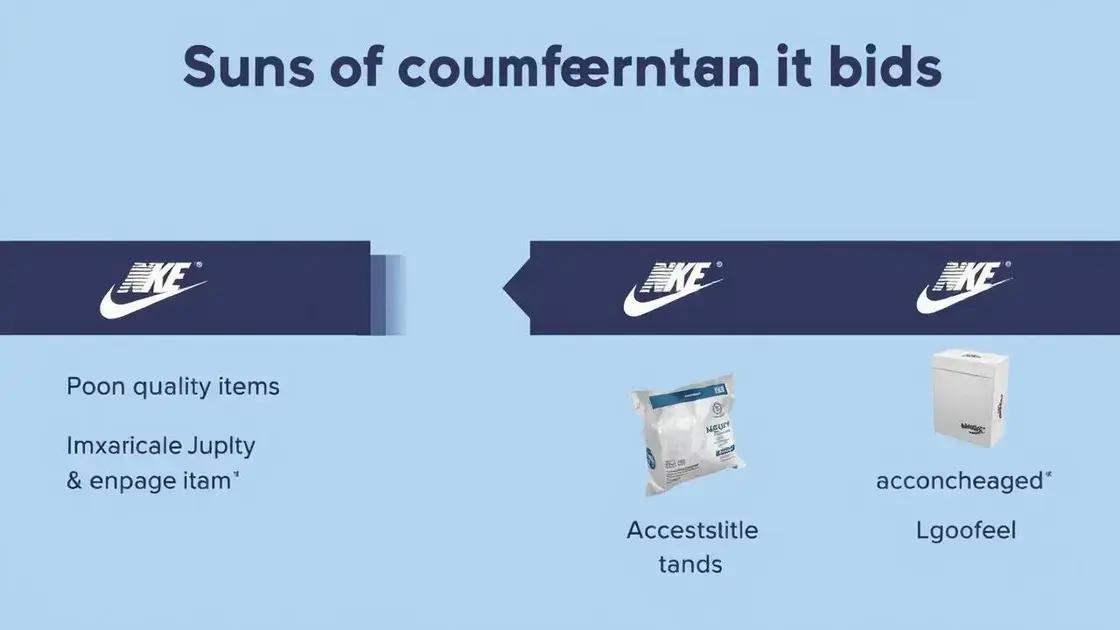To spot counterfeit products, look for signs such as poor quality, inaccurate logos, and missing information. Verify authenticity by checking serial numbers, using authenticity labels, and researching sellers. Always purchase from reputable retailers to ensure product safety and quality.
Counterfeit products can be a major concern for buyers, especially when it comes to quality and safety. Knowing how to identify and avoid fake items is essential in today’s market. In this article, we will delve into understanding counterfeit products, showcasing the signs to look for, and providing effective tips on how to verify authenticity when shopping. By becoming informed, you can protect yourself and ensure that you invest in genuine products that meet your expectations.
Understanding Counterfeit Products

Counterfeit products are items that are made to look like real products but are not authentic. These fakes can range from clothing and accessories to electronics and pharmaceuticals. Understanding counterfeit products is crucial for anyone wanting to make informed purchases.
What Are Counterfeit Products?
Counterfeit products are often produced with the intention of deceiving consumers. They mimic the design, packaging, and branding of reputable brands but lack the quality and safety standards of authentic products. Consumers may unknowingly buy these items, thinking they are getting a genuine product.
How Common Are Counterfeits?
Counterfeiting is a widespread issue, affecting numerous industries globally. Estimates suggest that lost sales from counterfeit goods cost companies billions each year. Additionally, the presence of counterfeit items can pose health and safety hazards, particularly in areas like pharmaceuticals and electronics.
The Impact of Counterfeit Products
Buying counterfeit products can lead to various problems, from financial loss to safety risks. These fake products often have subpar materials and can cause injury or malfunction. Moreover, the purchase of counterfeits contributes to the erosion of brand trust and can damage the reputation of legitimate companies.
Why Understanding Counterfeits Matters
Being aware of counterfeit products helps consumers protect their investments and ensure they are buying safe and reliable items. By understanding what makes a product counterfeit, consumers can make smarter choices and support legitimate brands.
Signs of Counterfeit Items

Identifying counterfeit items can be tricky, but knowing the signs of counterfeit items can help you avoid bad purchases. Here are some common indicators:
Poor Quality
One major sign of counterfeit products is poor quality. Authentic items are usually made with high-quality materials and craftsmanship. If the item feels cheap or has flaws, it might be a fake.
Inaccurate Logos and Branding
Counterfeit products often feature logos that look similar but may have slight differences. Check the spelling and design closely. Any mismatch could indicate a fake.
Price Too Good to Be True
If a deal seems too good to be true, it probably is. Authentic and high-demand products usually have a consistent price. If you find a product at a significantly lower price, be suspicious.
Missing Information
Counterfeit items may lack the necessary labels or documentation. Genuine products often come with tags, user manuals, and warranty information. If any of this is missing, it could be a warning sign.
Packaging Differences
Examine the packaging carefully. Authentic products typically have high-quality packaging with clear information. Counterfeit products may have poor-quality packaging or missing details.
Shopping at Reputable Stores
Buy products only from trusted retailers. Counterfeit items are often sold in places where the seller is not a reputable source. Stick to official websites or authorized dealers.
How to Verify Authenticity

Verifying the authenticity of products is essential to avoid counterfeit items. Here are some steps you can follow for how to verify authenticity:
Check Serial Numbers
Most genuine products come with a unique serial number. Check the manufacturer’s website or the product’s packaging for the serial number. If it doesn’t match their records, the product may be fake.
Look for Authenticity Labels
Many brands use authenticity labels or holograms. These can be difficult to replicate. Ensure that any labels present are clear and adhere to the brand’s standards.
Research the Seller
Before buying, research the seller. Look for reviews and ratings online. Trustworthy sellers will have positive feedback and provide contact information. Avoid unknown sellers with little to no history.
Contact the Manufacturer
If in doubt, reach out to the manufacturer. Most brands have customer service that can confirm whether a product is genuine. Provide them with details such as the serial number and purchase location.
Compare with Official Images
Check the official website for images of authentic products. Compare these photos with the product you have or are considering buying. Look for differences in color, logo placement, and overall design.
Use QR Codes
Some brands include QR codes on their products. Scanning these codes with a smartphone can provide information about the product’s authenticity. Ensure that the code leads you to the official brand page.
In Summary: Protect Yourself from Counterfeits
Understanding how to spot counterfeit products and knowing how to verify their authenticity can safeguard you from poor quality and unsafe items. By being aware of the signs of counterfeit items, checking for authenticity, and researching sellers, you can make informed decisions when purchasing products.
Knowledge is power, and by following the guidelines in this article, you can ensure that your investment in products is both safe and worthwhile. Protect yourself and others by only purchasing genuine items.
FAQ – Frequently Asked Questions about Spotting Counterfeit Products
What are counterfeit products?
Counterfeit products are fake items that mimic genuine brands but lack quality and safety standards.
How can I identify counterfeit products?
Look for signs such as poor quality, inaccurate logos, and missing information to help identify counterfeit items.
What should I do if I suspect a product is counterfeit?
You should verify its authenticity by checking serial numbers, contacting the manufacturer, and researching the seller.
Are counterfeit products dangerous?
Yes, counterfeit products can pose safety risks, especially in categories like electronics and pharmaceuticals.
Where can I find reliable sellers for authentic products?
Purchase from reputable retailers or official brand websites to reduce the risk of buying counterfeit products.
How does a poor-quality item indicate a counterfeit?
Genuine products are made from high-quality materials. If an item feels cheap or has flaws, it may be counterfeit.












